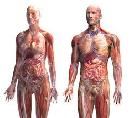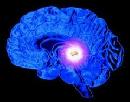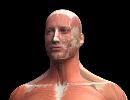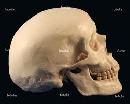Astronomy
Biology
Chemistry
Documentaries
Earth Sciences
Humanity
Life On Earth
Mathematics
Physics
Science Fiction
Technology
Biology
Chemistry
Documentaries
Earth Sciences
Humanity
Life On Earth
Mathematics
Physics
Science Fiction
Technology

Posted in Berkeley
This lecture begins by finishing off the male reproductive system before reviewing the information learned over the prior course.
Posted in Berkeley
This lecture wraps up female reproduction by covering the vulva and breasts before moving onto the male reproductive organs. It discusses the ducts and glands of the system and covers the testes, penis and semen.
Posted in Berkeley
This anatomy lecture covers the female reproductive organs and their constituents. It talks about the structure of the ovaries, fallopian tubes, uterus, vagina, and vulva.
Posted in Berkeley
This lecture largely focuses on the remainder of the endocrine system, including the structure and functions of the thyroid, parathyroid, adrenal, and pituitary gland.
Posted in Berkeley
The beginning portion of this lecture continues Professor Diamond's coverage of the urinary tract, with additional information on the kidneys, bladder, & urethra. She then gives a general overview of the endocrine system, starting with the pineal gland.
Posted in Berkeley
This continuation of Urinary Systems begins with the pancreas and its component cells. It then moves into an extensive breakdown of the functions, excretions, and structure of the kidneys,
Posted in Berkeley
This class covers a wide range of subjects, beginning with an overview of the anus and rectum before moving on to the tongue, salivary glands, liver, pancreas and jejunum.
Posted in Berkeley
This lecture briefly continues the discussion of the stomach before continuing along to the small and large intestinal tracts. It discusses the structure and functions of various intestinal components.
Posted in Berkeley
This lecture introduces the digestive tract, laying out the basic structure of the system. It describes the oral cavity & mouth, the esophagus, the stomach, and the layers of the digestive tract.
Posted in Berkeley
You've come a long way over the last 30 Interactive Biology 131 lectures. This class will help you review what you have learned over the duration of the course thus far, and is packed with images of the concepts.
1 |
CoursesMost Viewed 1. Lecture 01: Organization of the Body
1. Lecture 01: Organization of the Body 2. Lecture 33: Digestive System II
2. Lecture 33: Digestive System II 3. Lecture 10: Muscular System II
3. Lecture 10: Muscular System II 4. Lecture 03: Skeletal System II
4. Lecture 03: Skeletal System II 5. Lecture 21: Respiratory System II
5. Lecture 21: Respiratory System II 6. Lecture 38: Female Reproductive System
6. Lecture 38: Female Reproductive System 7. Lecture 12: Hematology I
7. Lecture 12: Hematology I 8. Lecture 16: Blood Vascular System I
8. Lecture 16: Blood Vascular System I 9. Lecture 32: Digestive System I
9. Lecture 32: Digestive System I 10. Lecture 06: Skeletal System V
10. Lecture 06: Skeletal System V Top Rated 1. Lecture 10: Muscular System II
1. Lecture 10: Muscular System II 2. Lecture 4: What is Life?
2. Lecture 4: What is Life? 3. Lecture 6: Diary Equation & Higgs Particles
3. Lecture 6: Diary Equation & Higgs Particles 4. Lecture 10: Darwin's Birthday
4. Lecture 10: Darwin's Birthday 5. Lecture 33: Digestive System II
5. Lecture 33: Digestive System II 6. Lecture 9: Equations of Quantum Field Theory
6. Lecture 9: Equations of Quantum Field Theory 7. Lecture 2: Quantum Field Theory
7. Lecture 2: Quantum Field Theory 8. Lecture 9: The Search for Life on Mars
8. Lecture 9: The Search for Life on Mars 9. Lecture 03: Skeletal System II
9. Lecture 03: Skeletal System II 10. Lecture 12: Hematology I
10. Lecture 12: Hematology I |
Copyright 2006-2014 Educated Earth





















